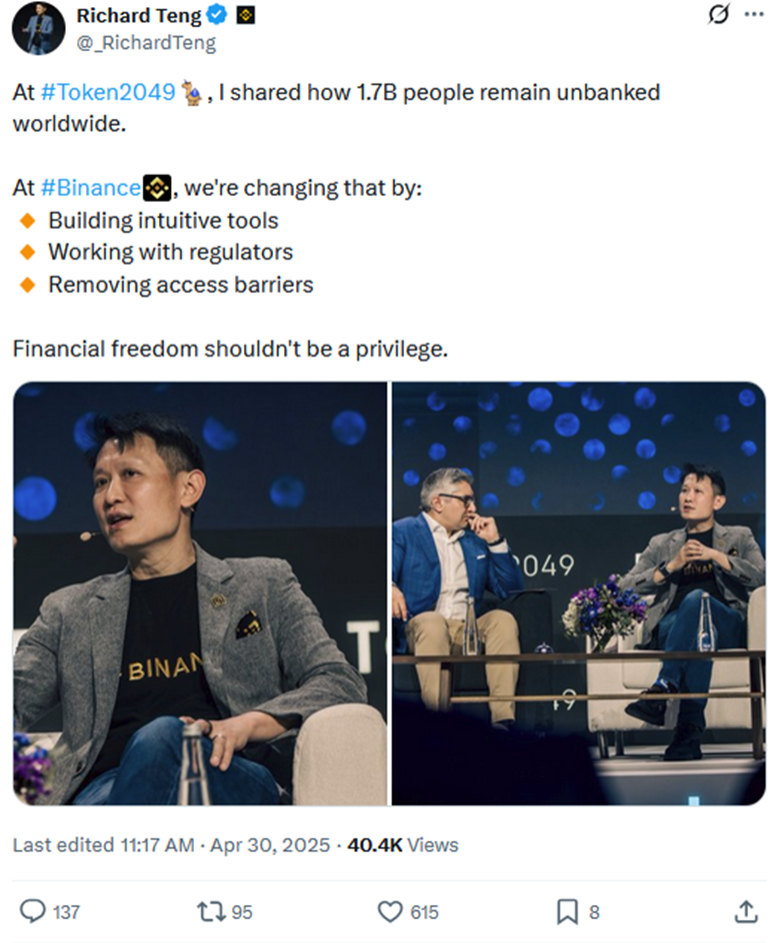Some may believe that, as time progresses, so does progress in solving longstanding social issues. While in some ways this may be true, in others, like global poverty, that is unfortunately not the case.
As the World Bank reported in October 2024, the total number of people worldwide living below the poverty line has barely budged since 1990. 44% of the world's population lives on less than $6.85 per day, with 8.5% of the population, totaling 700 million people, living on less than $2.15 per day.
There are numerous factors driving this persistent poverty, but there's one in particular for which Web3 and blockchain technology may be a solution: financial exclusion. Around 17.5% of the world's population is without access to banks and other basic financial services. These unbanked individuals are essentially cut off from the global economy, relegated to a life of poverty.
However, with the continued expansion of the Web3 ecosystem, widespread financial exclusion could give way to increasing financial inclusion, which in turn could make a tremendous impact on reducing poverty across the globe. Some of the biggest crypto industry leaders have stepped up to focus their organizational mission on helping the unbanked population gain access to the financial tools and resources they need.
In a recent fireside chat at the Token2049 conference, Binance CEO Richard Teng explained his vision for crypto's role in creating financial meritocracy: "At Binance, we're breaking barriers to empower the 1.7 billion unbanked worldwide through intuitive tools, regulatory collaboration, and open access. Financial freedom shouldn't be a privilege."

Crypto Offers a Lower-Cost, More Accessible Alternative to Traditional Banks
There are several reasons why so many around the world experience a lack of access to basic banking services. These reasons range from exorbitant fees charged by banks in many developing countries, stringent deposit requirements, and complicated application processes. However, blockchain-based banking platforms cut out these burdensome middlemen and offer a lower-cost, more accessible alternative to traditional banking.
These platforms, accessible via smartphone, enable consumers to conduct a variety of financial transactions, from simple deposits and withdrawals to digital payments and international remittances. That's not all. Along with offering an alternative to basic banking, these platforms also stand to help facilitate greater inclusion and access to business and personal loans.
Decentralized finance (or DeFi) platforms specializing in microlending and social impact investing have already started to emerge, including Celo and Ethiclub. These platforms help to connect impoverished farmers and business owners in developing countries with short-term loans funded from lenders in wealthier countries.
Web3 Disruption of Traditional Banking Could Accelerate
Poverty is a social issue as old as time; don't expect it to go away overnight. Even so, it's possible that the rise and continued growth of the Web3 sector will help to increase the pace at which blockchain-powered financial institutions begin to give their traditional banking counterparts a run for their money.
Last year, $9.33 billion in venture capital funding was committed to crypto startups, setting new records. A good portion of this capital has flowed into the coffers of DeFi and other crypto financial services startups. With this, new innovations could emerge that could help to provide a further boost to crypto's potential to serve as a vehicle for greater financial inclusion.
Moreover, any initial success with Web3 platforms as a means to provide financial inclusion to the unbanked and underbanked could attract private and public capital into this area, as investors and decision makers become convinced that the rise of Web3 is a strong solution to the financial exclusion issue.
A Driving Force for Financial Inclusion, in 2025 and Beyond
So far, blockchain technology has already started to promote financial inclusion in ways that policies and programs implemented by governments and non-governmental organizations (or NGOs) have failed to achieve.
There are many such examples of this, playing out in various regions of the developing world. For instance, in Africa, a blockchain-powered payment platform called Boom Pay has achieved great success connecting the unbanked and underbanked with the global economy.
In Asia, blockchain technology is helping to provide banks with a less risky route towards penetrating the unbanked/underbanked market, leading to increased financial inclusion throughout the region.
The evidence is growing that Web3, not governmental policies, handouts, or other means, stands to be the most effective way to reduce financial exclusion, maximize financial inclusion, and make significant progress in alleviating global poverty. During 2025, a greater number of market participants and decisions could start to appreciate this fact. In turn, acknowledging that Web3 will be the driving force for financial inclusion, in 2025 and beyond.
ⓒ 2025 TECHTIMES.com All rights reserved. Do not reproduce without permission.





